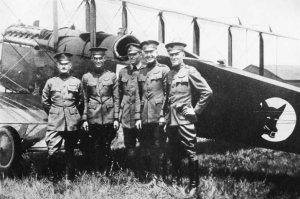New York to Nome in 1920
In the early days of aviation, any wilderness was a challenge for propeller-driven airplanes made of wood and fabric. And in 1920, there was hardly a territory more rugged and fraught with danger than Alaska.So it was that Billy Mitchell of the Army Air Service, who was always anxious to show off t…

In the early days of aviation, any wilderness was a challenge for propeller-driven airplanes made of wood and fabric. And in 1920, there was hardly a territory more rugged and fraught with danger than Alaska.
So it was that Billy Mitchell of the Army Air Service, who was always anxious to show off the power and reach of his airplanes, sent the eight-member "Black Wolf Squadron" on a month-long journey from New York to Nome, Alaska in four de Havilland DH-4 biplanes.
The expedition, led by Captain St. Clair Streett, left on July 15 and reached Nome on August 24. Then it was on to Fairbanks, where, Streett wrote later in National Geographic, the old "sour-dough" settlers "could not believe that we had covered the distance from New York in 50 hours , when they had spent 18 or 20 months reaching there by way of the Yukon in the gold-rush days." For many of the spectators, it was the first time they had seen an airplane.
Along the 4,500-mile route, the pilots had to contend with the elements, the lack of landing fields, and the constant worry that they'd have to come down in some remote stretch of forest or mountain. "The odd noises coming from the roaring motors made our hearts quail," Streett confessed. But the engines never gave out, and he wrote, "The reputation of the Liberty motor can never again be immoderately criticized within our hearing."